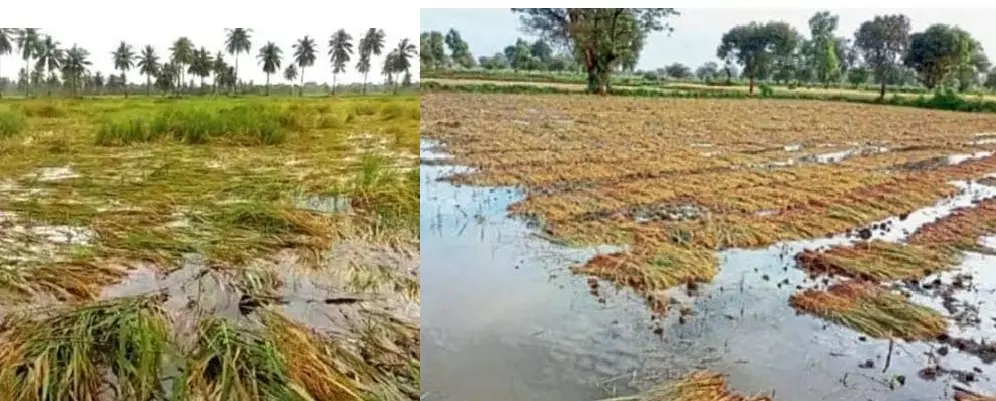Devastating Dana devours Odisha farmers’ a full year’s food
For many farmers in Odisha, agriculture is more than just work; it’s a lifeline, their only means to sustain families, educate children, and maintain their homes

Bhubaneswar: The quiet, sunlit fields of Odisha’s coastal districts had been brimming with hope and promise just days before Cyclone Dana ravaged them. Farmers were eagerly awaiting the harvest season, looking forward to reaping the fruits of their labour. But with a ferocity that tore through the region on Friday morning, Dana left behind a wake of devastation, and with it, a year’s worth of shattered dreams.
Gopal Chandra Bal, a paddy farmer from Ranagar in Kendrapara district, describes a grim scene.
“The paddy crops were at the flowering stage; we were so close to harvest,” he said. “But now, it’s all gone. The tall stalks of paddy that once stood proudly in our fields are now submerged in muddy water, slowly rotting."
Bal had invested everything he could manage into his four-acre paddy field, spending around Rs 60,000 on seeds, fertilizers, and labour. The destruction Dana left in its wake is staggering: apart from paddy, the storm flattened farms of groundnut, betel leaves, and the region’s treasured coconuts, along with vegetable crops like tomatoes, cabbages, and chillies. Each farm flattened is a family’s lost income, a season of labor wiped out in hours.
In the Aul area near Bhitarkanika, the cyclone’s landfall created ripples of uncertainty that have left farmers like Sudam Patra wondering how they’ll survive the coming months. “Our lives are tied to our fields,” he says with a weary sigh. “The money we make from the harvest is what keeps our children in school and food on our table. Now, we’re not sure how we’ll make it through.”
For many farmers in Odisha, agriculture is more than just work; it’s a lifeline, their only means to sustain families, educate children, and maintain their homes. But after the wrath of Dana, families across coastal Odisha are faced with bleak choices. Patra, who grows paddy and a few vegetables, invested Rs 1,50,000 in his crops. Now, without government intervention, he fears he may have no choice but to migrate in search of work.
Vegetable growers who cultivated between one and three acres of land have suffered losses up to Rs 3 lakh each.
“The cyclone didn’t just damage the crops,” says Kishan Rout, a farmer in the Chandbali area. “The sea surge rose nearly two meters, flooding our paddy fields with saline water. The salt content will make it hard for anything to grow there again soon.”
Cyclone Dana’s impact has not only disrupted the region’s agricultural backbone but has also created a ripple effect in the local economy. In Chandbali, the fishing community faces its own crisis, with boats damaged and their primary source of livelihood endangered. For farmers, vegetable growers, and fishermen alike, the aftermath of Dana has left a desolate landscape and an uncertain future.
Amidst the ruins, there is a glimmer of hope. Odisha’s Deputy Chief Minister, Kanak Vardhan Singhdeo, has assured the state’s agricultural communities of government support.
“We understand the extent of the damage caused by Cyclone Dana. District administrations have been asked to submit damage reports within a week, and we will respond with a compensation package to help our farmers recover.”
Revenue minister Suresh Pujari, while sharing information that a central team would soon visit the state to assess the crop damage, said the state government would soon provide its own financial assistance to farmers through Direct Benefit Transfer (DBT).
